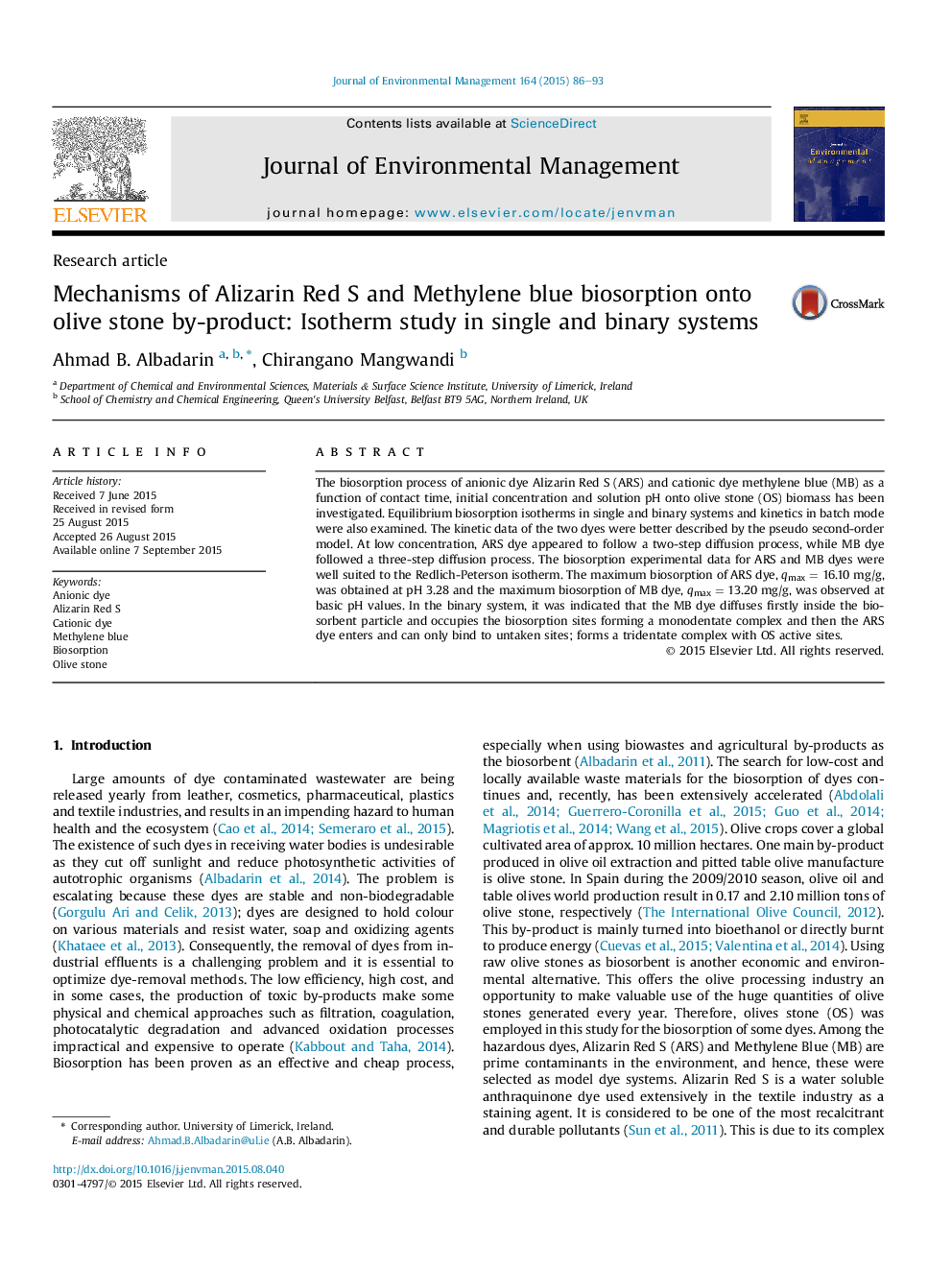| Article ID | Journal | Published Year | Pages | File Type |
|---|---|---|---|---|
| 1055410 | Journal of Environmental Management | 2015 | 8 Pages |
•Biosorption processes of Alizarin Red S and Methylene Blue dyes were investigated.•Olive stone qmax for ARS and MB dyes were 16.10 mg/g and 13.20 mg/g, respectively.•In the dye isotherm binary systems, an irreversible equilibrium scenario took place.•ARS formed a tridentate complex whereas MB formed a monodentate complex.
The biosorption process of anionic dye Alizarin Red S (ARS) and cationic dye methylene blue (MB) as a function of contact time, initial concentration and solution pH onto olive stone (OS) biomass has been investigated. Equilibrium biosorption isotherms in single and binary systems and kinetics in batch mode were also examined. The kinetic data of the two dyes were better described by the pseudo second-order model. At low concentration, ARS dye appeared to follow a two-step diffusion process, while MB dye followed a three-step diffusion process. The biosorption experimental data for ARS and MB dyes were well suited to the Redlich-Peterson isotherm. The maximum biosorption of ARS dye, qmax = 16.10 mg/g, was obtained at pH 3.28 and the maximum biosorption of MB dye, qmax = 13.20 mg/g, was observed at basic pH values. In the binary system, it was indicated that the MB dye diffuses firstly inside the biosorbent particle and occupies the biosorption sites forming a monodentate complex and then the ARS dye enters and can only bind to untaken sites; forms a tridentate complex with OS active sites.
Graphical abstractFigure optionsDownload full-size imageDownload as PowerPoint slide
